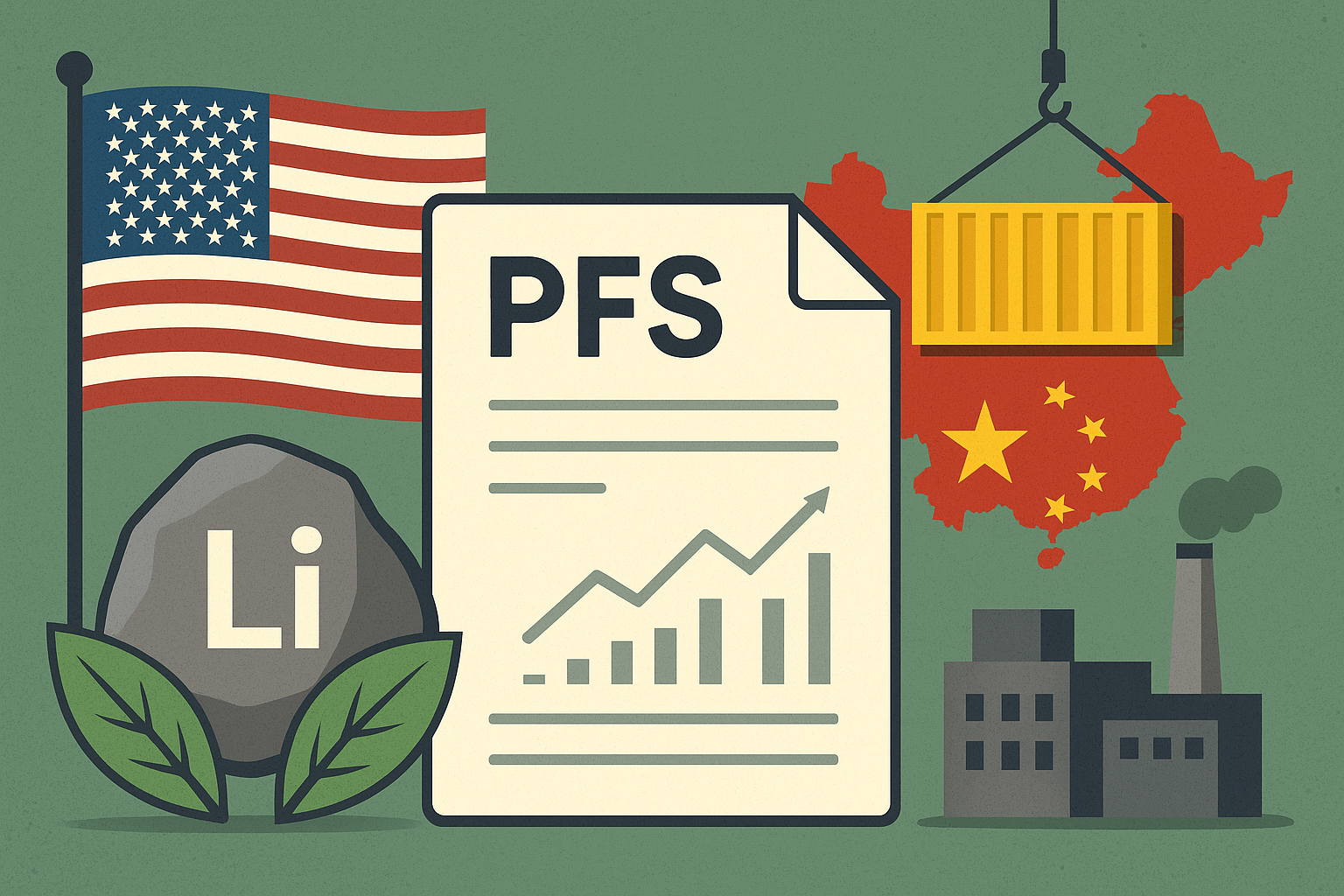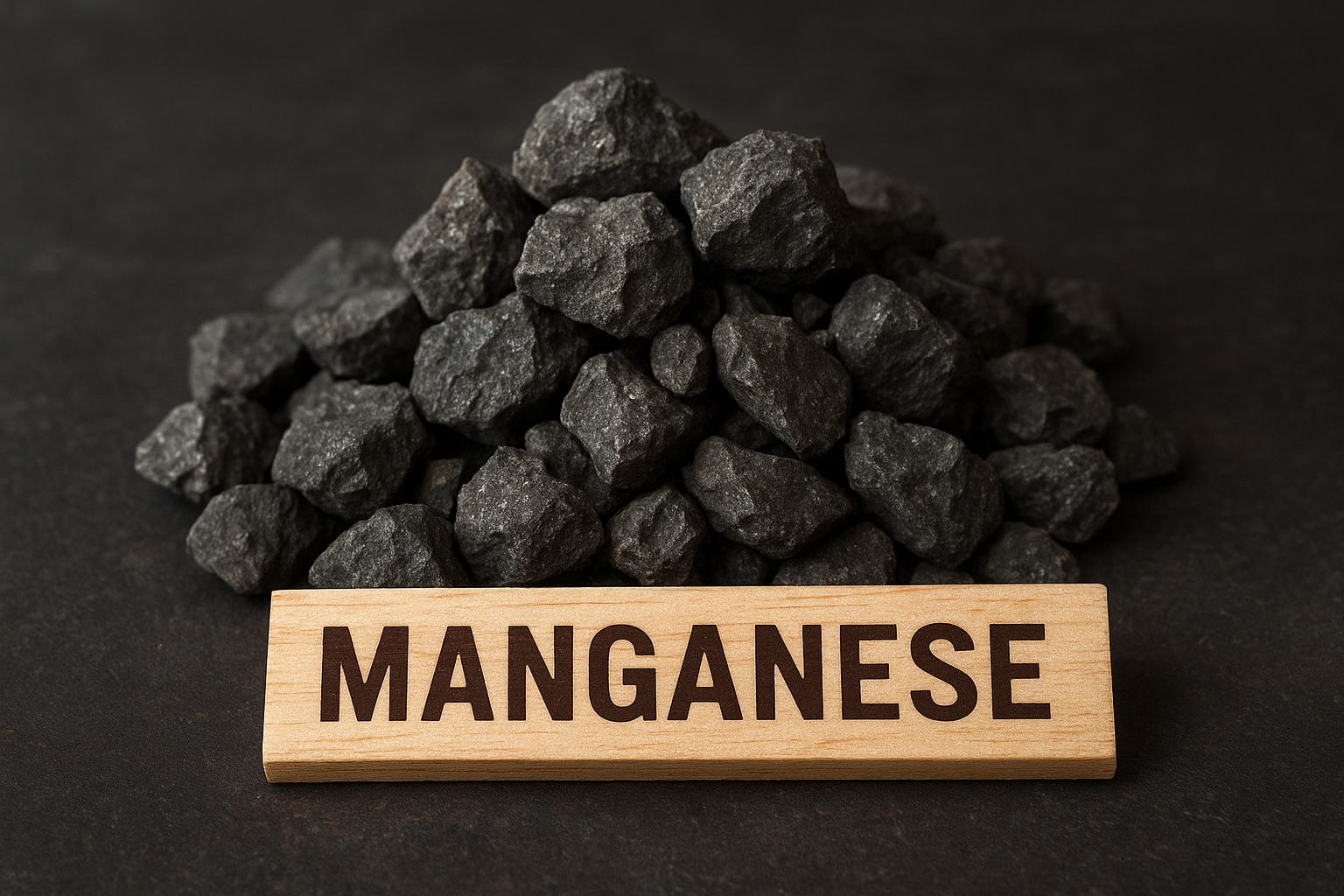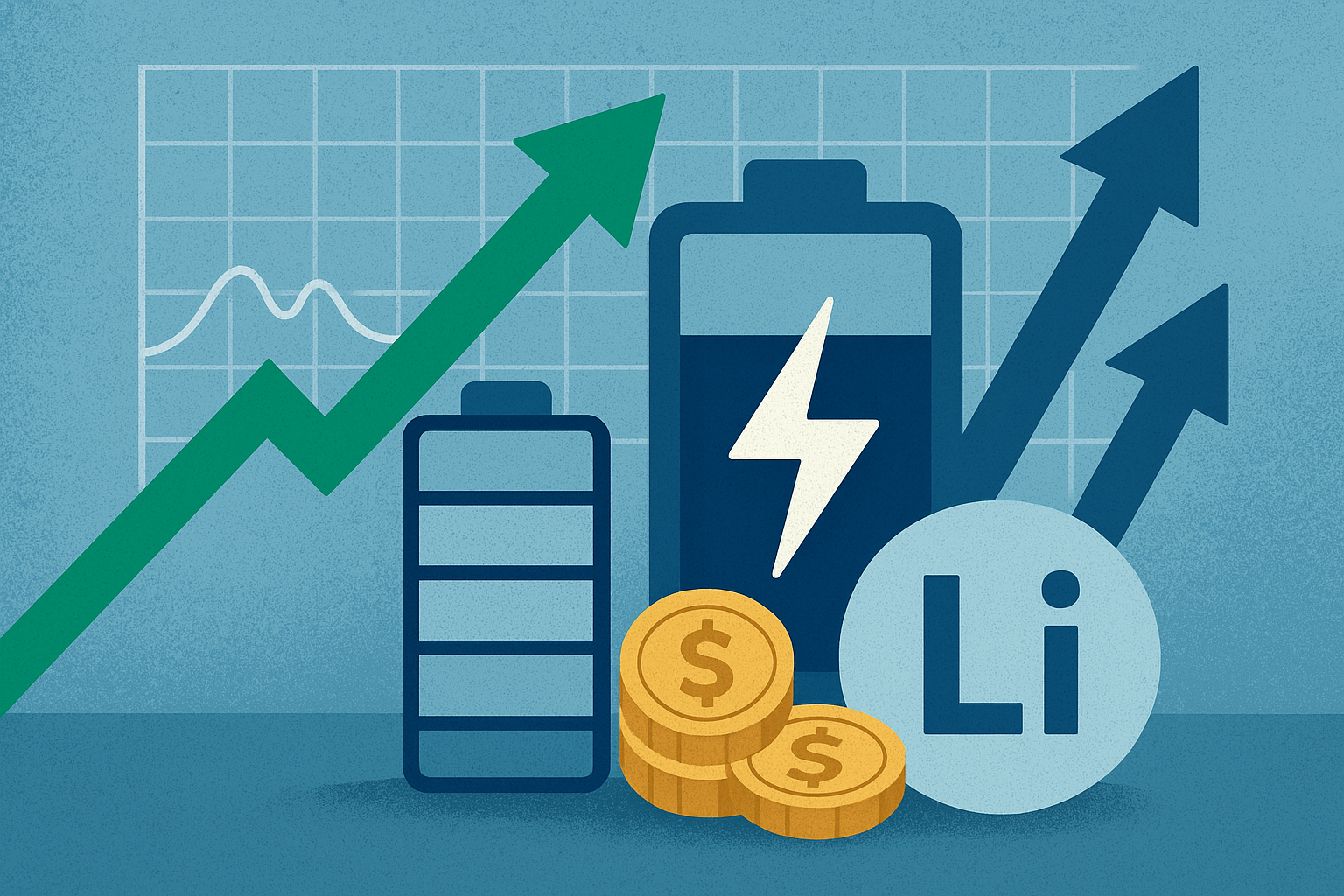The global lithium market, already caught between oversupply fears and tightening geopolitical control, took a sharp turn this week. The U.S. Department of Energy (DOE) abruptly terminated a $57.7 million grant to American Battery Technology Company (ABAT) — a move that rattled investors banking on domestic supply chain support. But in an unexpected counterpunch, ABAT released a milestone Pre-Feasibility Study (PFS) for its Nevada-based Tonopah Flats Lithium Project, revealing a $2.57 billion Net Present Value (NPV) and strong commercial viability.
Simultaneously, across the Pacific, China announced new export controls on advanced lithium battery materials and cathodes, effective November 8, 2025 — a policy shift that could disrupt global supply routes just as lithium prices hover near multi-year lows.
Together, these events underscore a broader theme reshaping the energy metals landscape: the lithium race is becoming less about geology and more about geopolitics, regulation, and strategic execution.
Washington’s Mixed Signals: Support and Scrutiny Collide
According to Reuters, the DOE ended its grant agreement with ABAT citing administrative and compliance issues, even as the company emphasized its financial stability and technical progress. ABAT noted it has already raised over $52 million independently and plans to continue developing its U.S. lithium hydroxide facility without federal assistance.
The DOE’s decision comes amid broader political scrutiny over how critical minerals grants are distributed. Industry analysts suggest the move could reflect Washington’s tighter oversight of domestic mineral funding — particularly after recent Congressional reviews into project efficiency and governance.
Meanwhile, ABAT’s Tonopah Flats PFS, published via GlobeNewswire, painted an optimistic technical picture. The study estimates one of the largest known lithium resources in the U.S., with a potential production cost advantage stemming from ABAT’s proprietary extraction process.
“Despite the DOE’s withdrawal, the project’s fundamentals remain compelling,” notes one lithium analyst from Fastmarkets. “The PFS de-risks the asset and confirms the U.S. still has scalable lithium capacity — if private capital steps in.”
Why This Matters for Investors
The incident highlights a crucial reality for investors in the energy transition: policy alignment risk is now as material as commodity pricing.
Even with promising deposits and solid project economics, developers are vulnerable to sudden shifts in regulatory sentiment or funding priorities.
For U.S. lithium investors, this raises two immediate considerations:
- Policy Exposure: Projects linked to government grants or loans may face political volatility. Investors should weigh exposure to public funding versus privately financed plays.
- Technical De-Risking: The release of a PFS typically reduces technical uncertainty, boosting valuation credibility. For ABAT, this helps offset some of the funding uncertainty triggered by the DOE’s withdrawal.
The story also signals that private capital and strategic partnerships may become increasingly vital in advancing U.S. lithium supply — particularly as federal agencies tighten scrutiny on grant recipients.
China’s New Export Controls: A Double-Edged Sword for Global Supply
At nearly the same moment the ABAT news broke, China’s Ministry of Commerce announced sweeping new export licensing requirements for advanced lithium materials and battery technology. The policy, detailed in a Mayer Brown analysis, introduces approval procedures for shipments of cathode materials, anode components, and related manufacturing tech starting November 8.
According to Fastmarkets, this announcement sent a ripple through LME Week 2025 discussions, with traders and analysts warning that the controls could reshape global lithium flows. While the market is currently oversupplied — with prices down nearly 60% year-on-year — the new restrictions could artificially tighten availability, particularly for downstream processors in the West.
“This is a strategic lever from Beijing,” noted an Energy Storage News report. “China isn’t just reacting to market prices — it’s re-asserting control over a value chain the U.S. is still struggling to build.”
For investors, this creates a complex dynamic: supply risks could temporarily lift lithium carbonate prices, but export delays and regulatory uncertainty could also heighten volatility and squeeze margins for midstream producers.
Future Trends to Watch
- Policy-Driven Volatility: The interplay between U.S. funding shifts and Chinese export policy will likely dominate lithium pricing dynamics through 2026.
- Domestic Supply Chain Development: U.S. projects with advanced technical data (like ABAT’s Tonopah Flats) may attract renewed interest from private equity, automakers, or OEM partnerships.
- Midstream Bottlenecks: Export controls could accelerate investment into non-Chinese refining capacity in North America, Europe, and Australia. Watch for announcements from Albemarle, Livent, and other producers looking to re-route or vertically integrate supply chains.
- Lithium Price Recovery Potential: Any perceived supply constraint could catalyze a short-term rebound in spot prices, particularly if inventories draw down faster than expected.
Key Investment Insight
For investors, the takeaway is twofold: technical validation matters — but political stability may matter more. ABAT’s PFS strengthens its long-term investment case, yet the DOE’s grant revocation reminds investors that the lithium sector’s future hinges as much on policy consistency as on grade or resource size.
Meanwhile, China’s export curbs could inadvertently benefit Western developers by pushing capital and attention toward “export-safe” projects within U.S. and allied jurisdictions.
In short: expect volatility — but also opportunity — as the lithium supply chain fractures and regionalizes.
Stay ahead of the market with ExplorationStocks.com — your trusted source for daily investor intelligence, sector insights, and breaking developments across the global resource economy.






